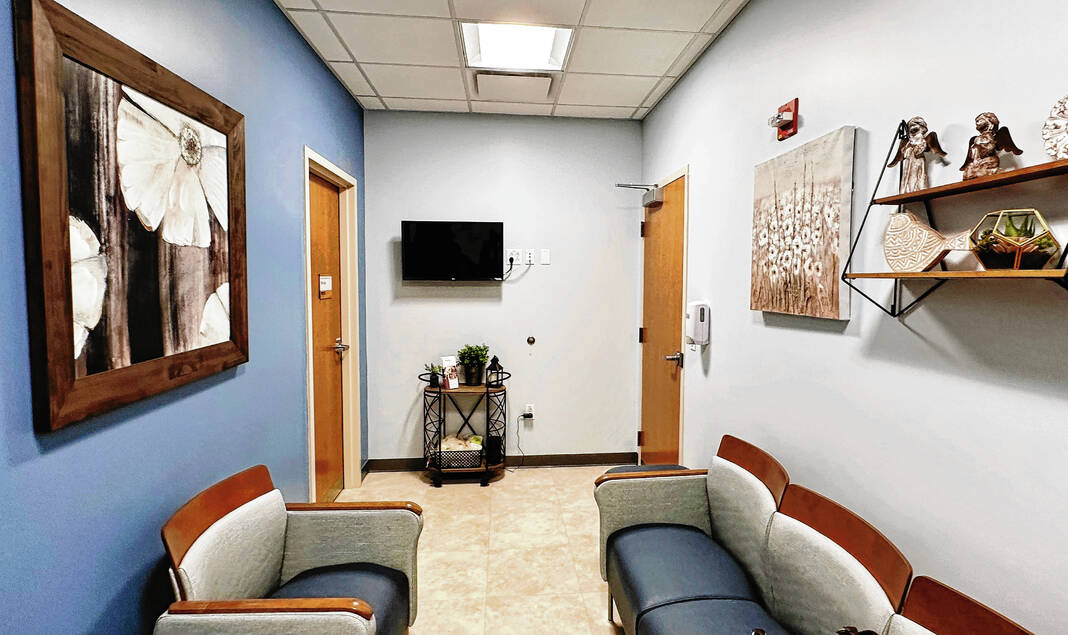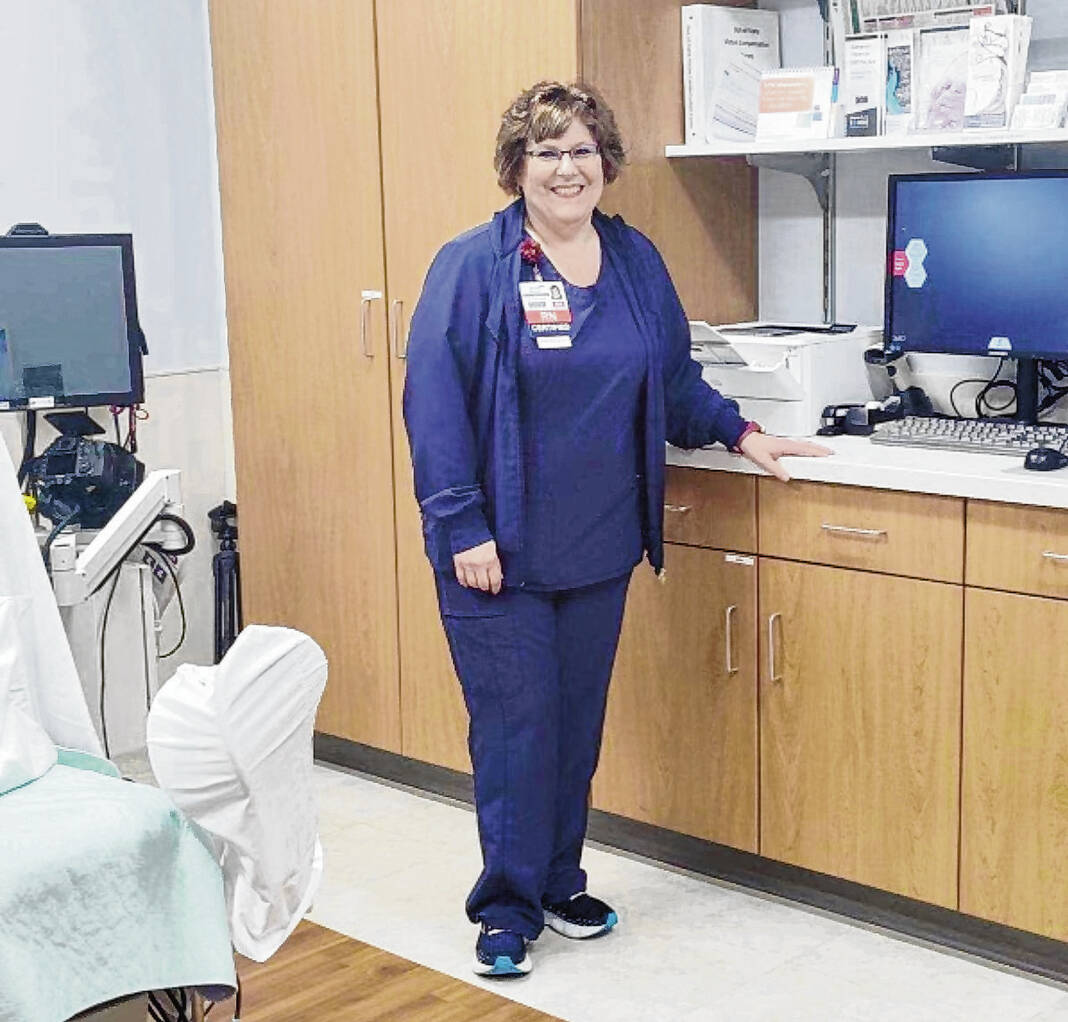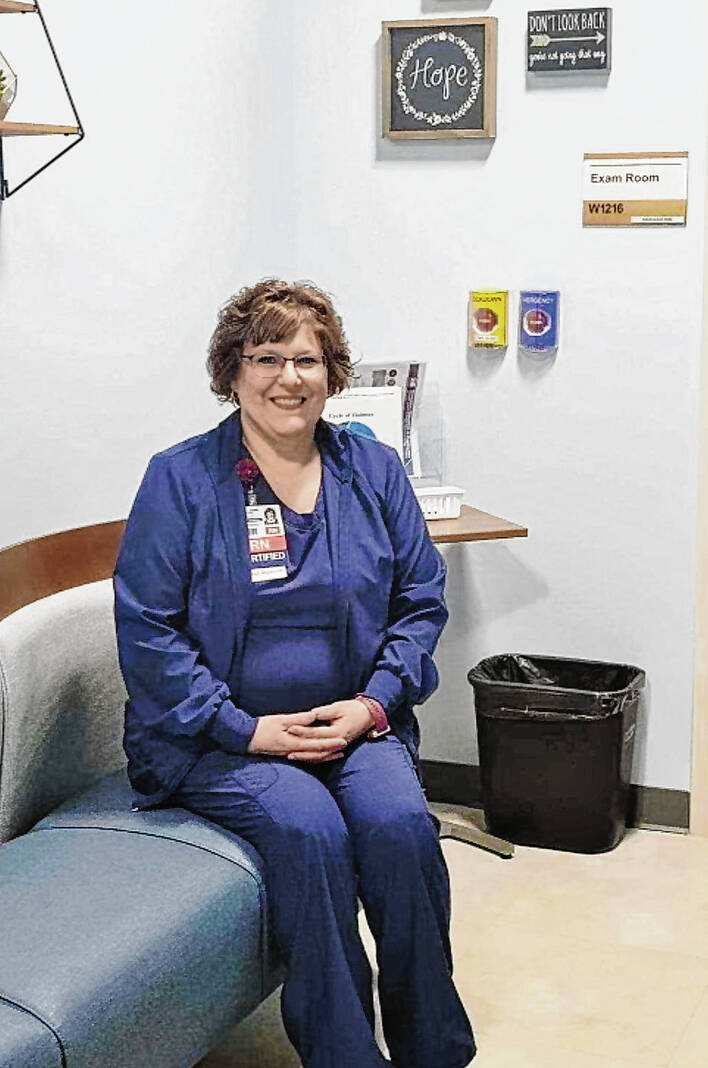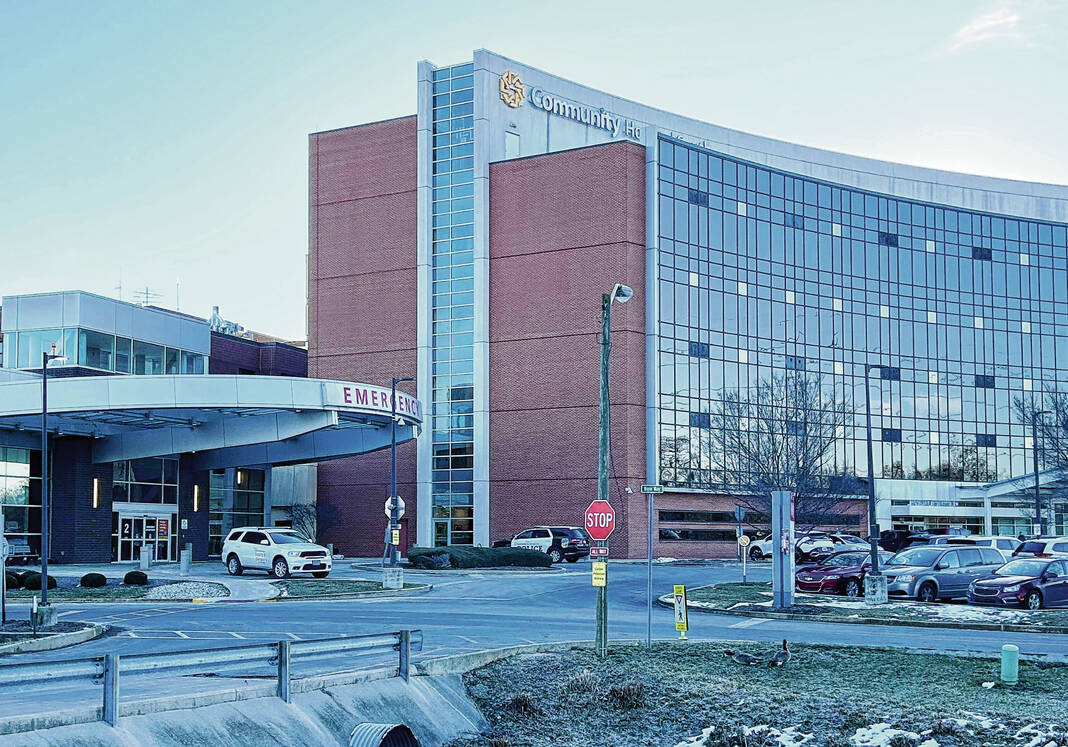
The emergency department entrance at Community Hospital South. Emergency room staff helped a young woman who had come to the hospital with her newborn child in extreme distress, and were able to not only treat the baby, but get the woman out of a human trafficking situation.
RYAN TRARES | DAILY JOURNAL
In the midst of a medical emergency, a different kind of crisis unfolded.
Staff inside the emergency department at Community Hospital South could tell something was very wrong. A young woman had come into the hospital accompanied by a friend with a newborn baby. The child was clearly in medical distress, and emergency department staff rushed to help.
But they had suspicions the woman had other issues.
“If something feels wrong, a lot of times it is wrong,” said Alicia Jones-Trapp, a registered nurse with Community Hospital South’s emergency department.
Working quickly, the Community South nurses, doctors and social workers were able to stabilize the tiny baby and talk with the mother to get the help she needed. Their efforts resulted in additional support and resources to escape from a situation where she was being trafficked by a family member.
Both the mother and her baby are in a stable home away from the person who hurt them.
“Their life is going to be completely altered and sent in a completely different direction because of that moment starting in our hospital,” said Trey Perry, a registered nurse in the emergency department.
The situation started in the early morning, when the emergency department at Community Hospital South was not very busy. The mother came in with her baby, accompanied by a former co-worker who the mother had reached out to as her child’s condition worsened.
“They hadn’t talked in a long time, but she knew when the mom reached out to her, she had to help,” said Sarah Wilken, clinical social worker at Community Hospital South.
In the rush of caring for the struggling baby, emergency department staff started to notice unmistakable signs that something was wrong.
Most glaring was the mother’s demeanor, Perry said.
“Usually you see mothers who are very concerned about their kids. This one seemed like she had no interest at all,” he said.
While providing care, Community South staff tried to gain information about the situation. They learned the mother had given birth at home, and she had no prenatal care. Even after her baby was born, she had not taken it to a doctor.
The mother spoke little English, so staff could only determine a limited amount of information.
“The whole time, it was hard to not notice that the mom was so detached from the situation,” Jones-Trapp said.
While nurses and doctors worked to stabilize the baby, social workers with Community South spoke to the mother and the friend who had come in with her.
The friend raised suspicions that the father of the child may be a family member, Wilken said.
“Even though it was just a suspicion, it was such a critical piece of information,” she said.
Community South’s staff leaned on training they had received from Center of Hope. The program was founded by Community Health Network in 1998 to care for victims of violence, abuse or neglect.
“Not just sexual assault patients, but any patient who comes into the emergency department that are victims of any kind of violence,” said Jennifer Conley, nursing director of Center of Hope. “So we see sexual assault, domestic violence, human trafficking, child abuse and neglect, elder abuse and neglect.”
Patients can receive a variety of services through the Center of Hope, including medical care, forensic nursing exams, injury identification and documentation, assistance with emergency shelter placement, crisis intervention services and follow-up medical care.
Services are available 24 hours a day, seven days a week at Community Hospitals East, North and South, as well as at Community Heart and Vascular Hospital.
Last year, the Center of Hope saw about 1,300 patients, Conley said.
“We are called forensic nurses. We always stay in our lane of nursing, so we work with law enforcement and the prosecutor’s office to help them with the continuation of the investigation and prosecution,” she said.
Throughout Community Health Network, Center of Hope staff did trainings on signs of human trafficking for nurses and doctors across the health care system. Warnings included patients who were pregnant but had no prenatal care, someone seeking treatment multiple times for sexually transmitted diseases, a patient without any identification or who does not know their address.
“These in and of themselves doesn’t necessarily mean, ‘Oh, this person is being trafficked because they don’t have their ID with them.’ But you start putting these little pieces together and think, wait a second, something doesn’t add up,” Conley said.
The mother and her baby were transferred to another hospital for further treatment once emergency department staff at Community Hospital South had stabilized the child. Wilken was able to contact the social worker at that hospital to run through all of the concerns the team at Community Hospital South had about the situation, including questions about her age, potential trafficking and that the father of the baby may be a family member.
Slowly, a horrifying picture became more clear. The mother had been trafficked by her family and suffered sexual abuse by a family member which resulted in her pregnancy.
“We found out later that they were able to speak with (the mother) alone and make her feel safe, and she disclosed that, yes, she was being trafficked amongst her family members and whoever else,” Wilken said.
Community Hospital South staff were able to make referrals to get home services for the mother and her baby. They helped her acquire basic needs such as a bassinet and a pack-and-play. They were able to work with the Department of Child Services to get a support system in place they didn’t have before.
In addition, the mother and her baby were adopted into a safe home.
“Their immediate needs were some safety. That was accomplished through everybody that was involved in the case, getting those basic needs met,” Conley said.
Everyone involved in the situation knows the woman and her baby face significant challenges. But they are able to look at the work they did in a tense moment, and not only save the baby’s life, but to clear a path where the mother could be saved as well.
“It feels good to know that this had a good outcome,” Jones-Trapp said. “It could have gone in a different way, and that little girl’s life could have gone in a different direction if she would have lost her baby.”










